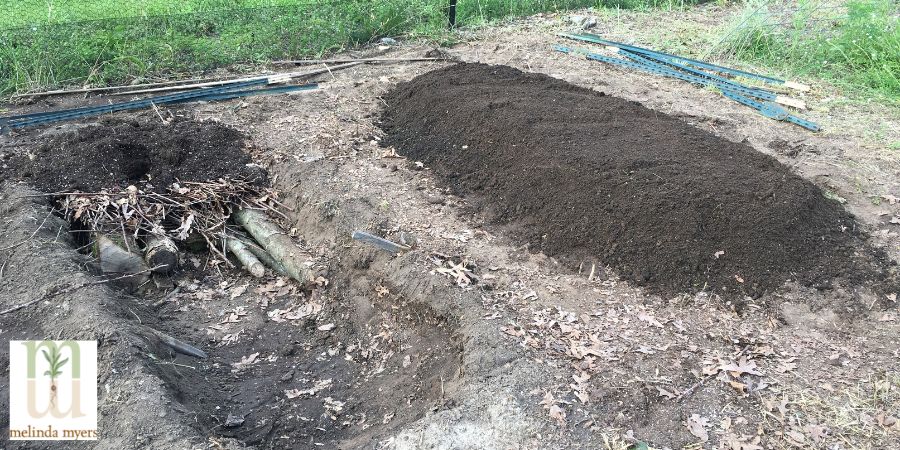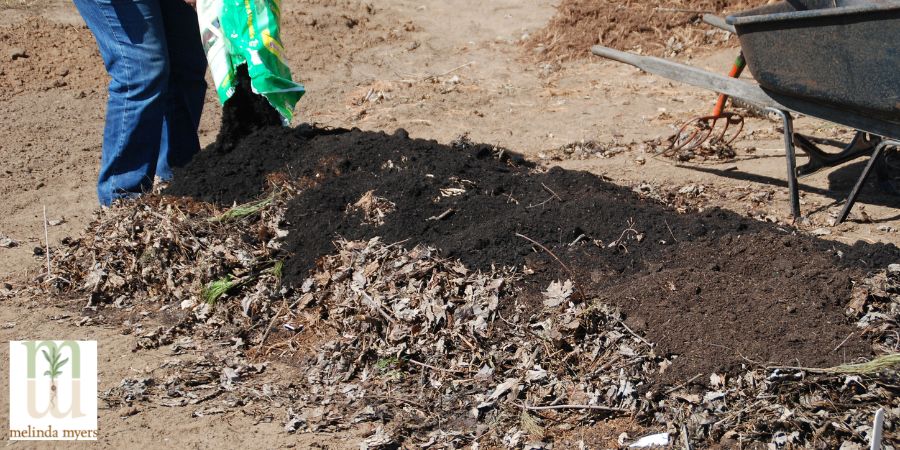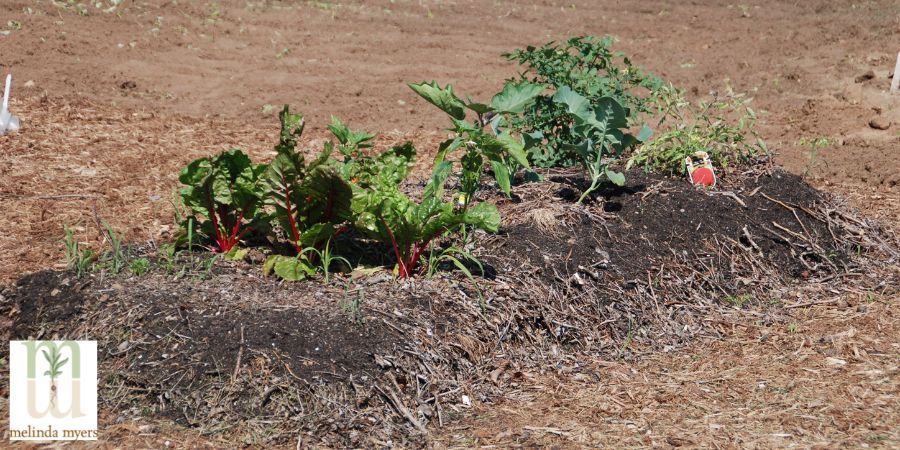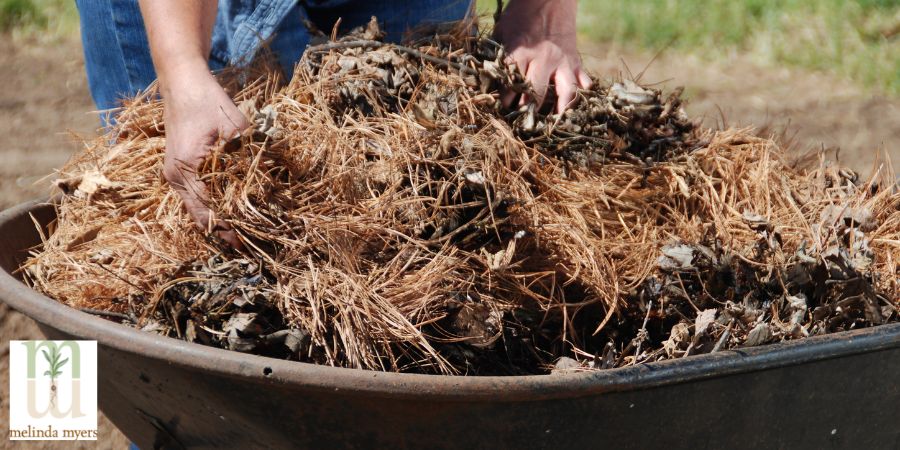No-Dig Gardening
- horticulturist and gardening expertJune 25, 2022
I grew up in Ohio with a father who tended a vegetable garden in our backyard. Every spring he collected aged manure from his parent’s farm and brought it back in the trunk of our car. My dad would dig the aged manure into the garden each spring and every fall harvested some of the biggest and best-tasting vegetables on the block
Fast forward to when I moved to Milwaukee and finally had a small city lot to garden. I amended the clay soil with compost, planted and used organic mulches to conserve moisture, suppress weeds, and improve the soil as it decomposed. After 26 years I left behind wonderful soil when I moved to the country. I started gardening in sandy rocky soil. I knew I didn’t have 26 years to build great soil and looked for ways to speed up the process of building healthy and productive soil. That’s how I started incorporating no-dig gardening into my new landscape.
Why Do a No-Dig Garden?
No-dig gardening, often called no-till gardening, is a way to create a good growing foundation with minimal disturbance of the existing soil and in less time. Minimizing or eliminating tilling the soil increases organic matter, maintains and over time improves soil health and structure, saves water, and boosts plant growth. It also reduces weeding since you are not turning the soil and bringing more weed seeds closer to the surface where they can sprout and grow.
Just like any technique, you will find variations of no-dig gardening. There are many YouTube videos, articles, and books on the topic. I think Charlie Nardozzi’s book No-Dig Gardening provides an overview and a bit of history on this topic and ways to incorporate it into your gardening efforts.

Hugelkutur garden beds
This technique seems to fit into three categories. These are the multi-layered methods like lasagna and hugelkutur, creating beds from all compost like that of Charles Dowding and deep mulching introduced by Ruth Stout in the 1970s. You will find gardeners offering pros and cons and variations on each of these no-dig gardening strategies. Finding the one that works best for you, your growing conditions, and your gardening style is key to success with any gardening technique.
Multi-Layered No-Dig Gardening
This method puts landscape trimmings to work to create a rich planting mix. I use this method to create new garden beds. I was lucky enough to hear Patricia Lanza author of speak on Lasagna Gardening speak on the topic. It seemed this no-dig method best fit into my gardening situation and style. It is basically building a compost pile the size and shape of the garden bed. The mixture used is not as precise and you do not turn it like you would a compost pile.
Start your lasagna garden by measuring and marking your garden bed. Cut any grass and weeds in this area very short and cover with moist newspaper or cardboard. This smothers any existing grass and weeds.

Next, add a 2 to 3-inch layer of peat moss or compost. Top this with 4 to 8 inches of plant debris such as leaves, plant-based kitchen scraps, herbicide-free grass clippings, straw, or other similar materials. Sprinkle a bit of fertilizer over this layer. I use low nitrogen slow-release Milorganite since it contains 85% organic matter and feeds the soil and plants. Cover with an inch of compost. Repeat the layers, just like making lasagna, until your garden is 18 to 24 inches high.
Consider creating your beds in the fall when all the ingredients are readily available. I often build my beds in spring and plant immediately. You can plant transplants directly in your lasagna garden bed. Just sprinkle compost or potting mix on top of the beds when planting seeds.
Hugelkultur, or mound gardens take this one step further. The bottom layer is made of logs, branches and fall leaves. Do not include black walnut which is toxic to many plants or cedar and black locust that are very slow to decompose. The rotting logs and branches absorb water making it available to the plants in the garden. As the tree trimmings decompose they add nutrients to the soil. Then top this layer with a lasagna garden.
These beds gradually settle but the benefits remain. I found fewer weeds in the beds and continue to build additional layers every few years on top of my established beds.
You can also use these methods to create the planting mix needed to fill raised bed structures. Not only will you save money but you will put landscape trimmings to work creating a quality planting mix for growing your favorite vegetables and flowers.

Completed Lasagna Garden
A Garden Bed of Compost
Another method involves cardboard and compost. Charles Dowding made this method popular. Once again measure and mark your garden bed. Cover the surface with non-shiny cardboard removing any staples and tape. The cardboard is used the first year to smother existing weeds and grass. Cover the cardboard with 5 inches (12+cm) of organic matter such as compost or composted manure.
Plant seeds and transplants into the compost. Every year spread an additional two inches (5cm) of compost over the soil. He has found fewer slug problems using compost as opposed to deep layers of plant-based mulch for his technique.
Deep Mulching
Mulching is something many of you are probably already doing. Covering the soil surface with a layer of leaves, evergreen needles, woodchips, or other organic matter to help suppress weeds, conserve moisture, and improve the soil as it breaks down. Ruth Stout took this one step further by covering the garden with deep layers of mulch year-round. She wrote several books on the topic and you can find insight into her method in an interview she did with Mother Earth News.
Ruth was a conventional gardener for many years tilling the soil before planting. Then she converted to this no-till method. She recommends spreading at least an eight-layer of hay, straw, leaves, pine needles, sawdust, weeds, or plant-based kitchen scraps over the garden surface. You’ll need about one 50-pound bale of hay to cover 100 square feet.

The mulch will settle making it easier to plant seeds and transplants. Just pull the mulch aside and plant as you normally would. The mulch can be pulled back closer to the transplants once in the ground the same as mulch in a traditional garden.
Potatoes and some have found garlic can be grown right in the mulch. Just place the potatoes and garlic cloves on the soil surface and cover with straw or hay. They will sprout and grow through the mulch.
See Ruth and her garden and hear how she uses deep mulch to grow her vegetables in the Ruth Stout’s Garden video. The quality is a bit lacking but the insight into her character is worth a watch.
No-Dig Gardening Items to Consider
As you contemplate changing to no-dig do a bit of research of your own. As in any endeavor, we find things that work well, improvements that can make it better, and adaptations to best fit our gardening style and situation.
Evaluate your existing soil first. Many find that compacted and poor soil may benefit from tilling and incorporating compost in the first year to speed the process. Some no-dig gardeners including Ruth Stout tilled their soil for years before converting to no dig. Let your current soil condition help you decide how to manage the existing soil and implement no-dig gardening.
Accessing sufficient compost can be a problem for many. Most gardeners are not able to create enough compost from their garden debris to implement some of the no-dig methods. Those in urban and suburban areas may not have the space and sufficient garden debris to create needed compost. Access to and cost of needed organic materials may also be an obstacle for some.
Finding and purchasing quality compost can also be a challenge for every gardener. Poorly processed compost can contain weeds seeds, trash, jumping worms, and other undesirable items.
Gardeners in areas where jumping worms are a threat have become hesitant to purchase topsoil, mulch, and compost for their landscape. These invasive worms are a threat to our soil ecosystems, gardens, and native plant communities. They are not native to North America and devour huge amounts of leaf litter and organic matter critical to soil structure and plant health. Jumping worms can spread up to 17 acres in a year and their thrashing behavior makes them less appealing to predators. They are often introduced into new areas on plants, compost, mulch, and soil brought into the landscape. If jumping worms are a threat in your area, ask your source how they are managing the compost, mulch, and topsoil to avoid spreading these invaders into landscapes.
Several gardeners found voles, slugs, snails, cold soil, and rot from overly wet conditions were a problem with deep mulching. Selecting the right mulch for your growing conditions is important to avoid these issues.
With proper planning and a bit of research, you can create a no-dig garden that works best for you. Building soil health is the long-term solution to growing healthy and productive gardens, reducing weeds, and minimizing pest problems.

